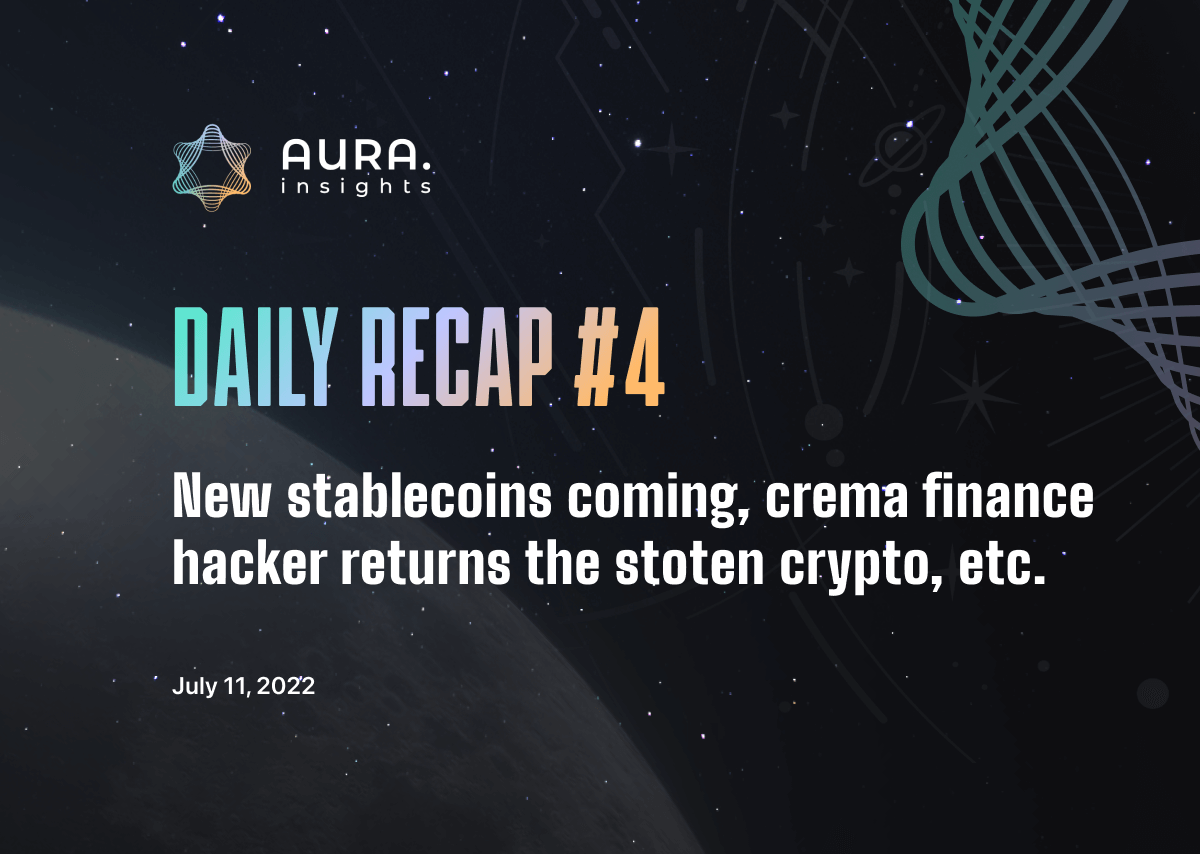1.Shiba Inu plans to launch a stablecoin
A lead developer plans to expand the Shiba Inu ecosystem with decentralized stablecoin, a reward token called TREAT as well as a SHIBA Collectible Card Game for its metaverse. This token will also "help provide balance to" Shiba Inu's stablecoin. Developers are also reserving "a limited supply" of TREAT for longtime backers of the project.
Shiba Inu was launched in 2020 August, and later launched a decentralized exchange, ShibaSwap, and ecosystem tokens named BONE and LEASH, with further plans to expand the meme coin into a crypto ecosystem.
2. Aave launching new stablecoin “GHO”
Aave Companies is proposing to the DAO the introduction of a native decentralized, collateral-backed stablecoin, GHO, pegged to USD.
With community support, GHO can be launched on the Aave Protocol, allowing users to mint GHO against their supplied collaterals. GHO would be backed by a diversified set of crypto-assets chosen at the users’ discretion, while borrowers continue earning interest on their underlying collateral.
3. Modular Blockchains: A Deep Dive
Existing L1 blockchains are facing a problem called the "Blockchain Scalability Trilemma". This is because they typically compromise on decentralization, security, or scalability to provide solid guarantees for the other two.
With a modular architecture, we can solve the blockchain scalability trilemma through the principle of separation of concerns. Through a modular execution and data availability layer, blockchains can scale throughput while simultaneously maintaining properties that make the network trustless and decentralized by breaking the correlation between computation and verification cost.
4. Crema Finance hacker returns $7.6 million worth of stolen crypto
On Sunday, Crema Finance, a concentrated liquidity protocol on Solana, suffered from a flash loan exploit.
The losses amounted to 69,422.9 SOL and 6,497,738 USDC stablecoin.
After a long negotiation, the hacker returned 6,064 ETH ($7 million) and 23,967 SOL ($870,000) and took 45,455 SOL as the white hat bounty.
5. 0xb1 doxxed and ties with Celsius
In 2019, Jason Stone founded a company called KeyFi that wrote MPC staking software and strategies. After discussions with Celsius Network in mid 2020, Celsius began an acquisition of KeyFi’s assets and team. Thereafter, Jason pivoted KeyFi to staking and deploying DeFi strategies for Celsius.
In August 2020, 0xb1 was created, along with other addresses, to send Celsius Network’s customer deposits to 0xb1 to manage. By the time Celsius and KeyFi parted ways, 0xb1 were managing nearly $2 billion of assets.
Celsius’s risk management team monitored our investment strategies and performance using HedgeGuard and DeBank. But in late Feb 2021, 0xb1 discovered Celsius had lied to us. They had not been hedging our activities, nor had they been hedging the fluctuations in crypto asset prices. The entire company’s portfolio had naked exposure to the market.
0xb1 informed Celsius that they wished to terminate their relationship. That was March 2021. They told Celsius that they would work with them to unwind our various positions over the following months.
By April 2021, the value of assets under our management had increased by over $800 million.
But when 0xb1 unwound the DeFi positions, Celsius suffered impermanent loss. At first, they believed the impermanent loss was evidence of KeyFi stealing and accused Jason of being a thief. They later came to accept the IL for what it was, but claimed Mr.Stone was responsible for it. They completely ignored the fact that they had full visibility into all trading strategies deployed by KeyFi and promised to hedge that exact risk.
0xb1 have tried for over a year to quietly settle this dispute with Celsius. Pursuant to the contracts Celsius signed with KeyFi, they owe KeyFi a significant sum of money. 0xb1 believes they have been more than reasonable in attempting to resolve this with them.










